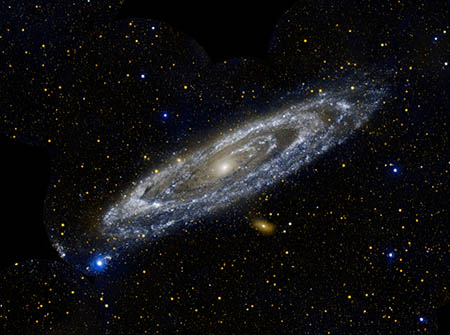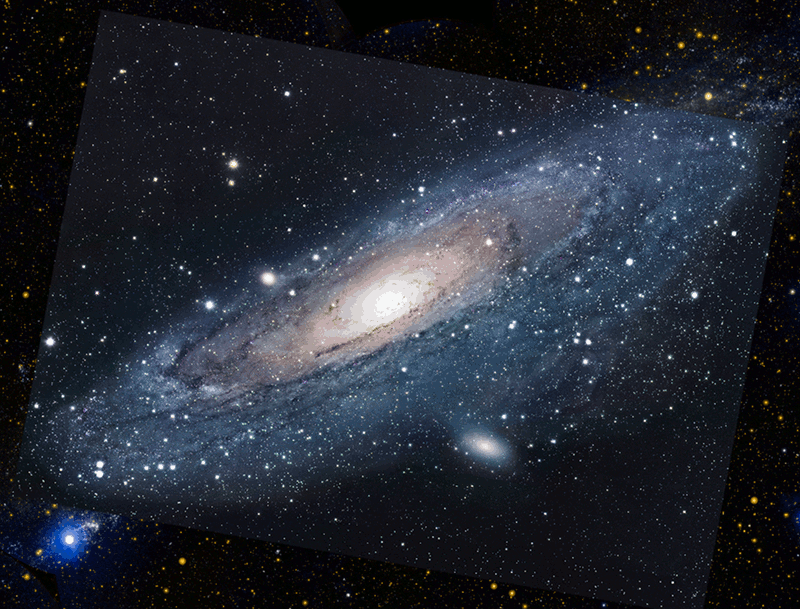Hopefully we are all aware of the fact that ultraviolet rays from the Sun are bad for our skin. The reason they are hazardous is because of the high energy that that they possess, which allows them to penetrate our skin and damage the cells internally. UV is a small part of our Sun’s emissions but UV radiation is a major component of the energy emitted by very hot, massive stars, as can be seen in the image below from NASA’s Galex (Galaxy Evolution Explorer) satellite.
These stars that line the arms of the Andromeda galaxy are the result of dust and gas that form the structure of the arms and consequently, the birthing place of new stars. Blue giants have very high surface temperatures ranging from 10,000 to more than 40,000 degrees Kelvin. The more massive the star, the hotter it is and the more it will radiate in the ultraviolet. But, running hot and massive comes with a cost. These blue giants will burn out in supernovae in a few tens of million of years. (A very short time – astronomically speaking!) Compare this with our Sun, which has a surface temperature of about 6000 degrees Kelvin and will be around for at least 10 billion years.
Below you can see Andromeda in a Hubble image in the optical spectrum fading to the ultraviolet image from Galex. It’s easy to see that these high-powered stars reside in the dusty arms of the galaxy. In a few million years the Milky Way Galaxy will have a ring-side seat to view these blue giants as they spectacularly end their lives!
For more on the Andromeda galaxy take a look at an earlier post to see Andromeda in a different light: The Many Faces of Andromeda.
Till next time,
RC Davison


